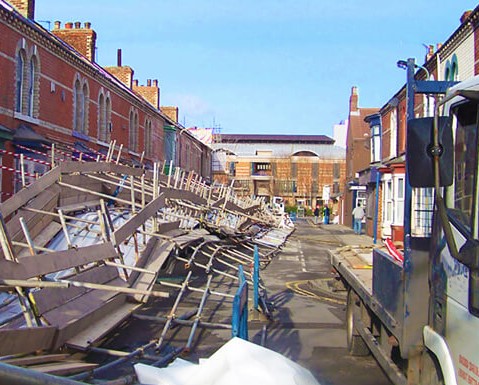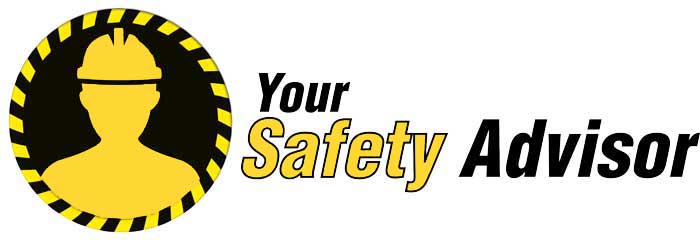
Work at Height Seasonal Scaffolding Concerns
Unless you are one of the lucky ones who can down tools for 6 months each winter, the chances are the UK weather will affect you and your methods of working in one way or another! So have you given consideration to the Seasonal Scaffolding Concerns of work at height?
With the days getting shorter and the winter storms already upon us, it places an extra health and safety concern especially on the use of scaffolding during this time.
We’re sure a lot of you will have seen the frightening image of the collapsed scaffold in North London early this year. Thankfully, no-one was hurt, but it could have been much worse. It is not our job to speculate why or how this happened, but to help and advise our clients as part of our Retained Safety Advisor Service on how to avoid such potentially catastrophic disasters. With more strong winds and storms likely over the coming months it is worth pointing out a few things to consider if you have scaffold on your site or building.
In 2004 an international standard was published for scaffolding. Unfortunately it was better suited to system scaffolds than to the more traditional tube and fitting scaffolds used in the UK. There was a great deal of debate at the time as to who would prepare guidance for implementation, and it took 9 years before the National Access and Scaffolding Confederation delivered TG:20.
The Work at Height Regulations specify that scaffold be assembled to a generally recognised standard configuration, such as TG20 or similar guidance from manufacturers of system scaffolds or it should be designed. A work at height online training course is available here and can be used to help make your staff aware of the issues associated with Work at Height and the Seasonal Scaffolding Concerns.
You should be able to provide your clients with a compliance sheet (or handover certificate), setting out the size of the scaffold, the location, the duty of the scaffold and details of ties for the scaffold. Location is particularly relevant if, for example, you are located high up on a hill or on an exposed coastline where there is a potential for high winds, although it is worth noting that climate change may be determining any type of weather appearing anytime! Seasonal norm may just be a thing of the past! Also is sheeting or temporary roofs are used, extra considerations must be given to the security and stability of the scaffold structure.
The Work at Height Regulations 2005 also require that scaffolds be inspected by competent trained person before first use, every seven days thereafter and ideally before and following any significant event which may have affected its stability, such as high winds.
Well designed and competently erected scaffold structures should not collapse and still remain the safest option for working at height when used correctly. Many previous scaffold collapses have occurred following the removal of ties which were originally placed to hold the structure in place; it is therefore essential that unauthorised persons should never interfere with or alter or remove any part of a scaffold.


